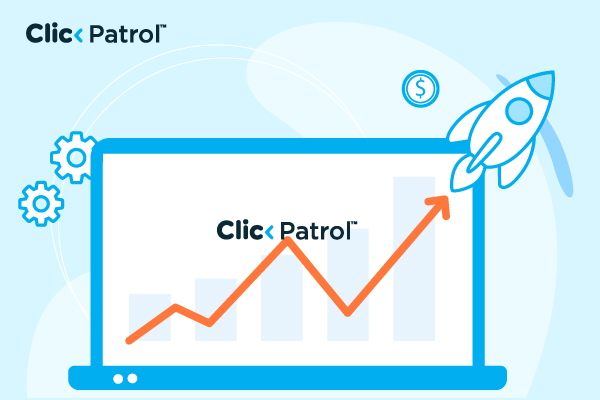
Brand pillars explained: How to build a strong, memorable brand identity
Abisola Tanzako | Mar 28, 2025

Table of Contents
- Brand pillars: What they are and why they matter
- Top 5 reasons why brand pillars are important?
- 1. Guiding business strategy
- 2. Enhancing customer loyalty
- 3. Differentiating from competitors
- 4. Improving internal alignment
- 5. Driving long-term growth
- The five (5) core brand pillars in detail
- 1. Purpose: Brand’s "Why"
- 2. Values: Guiding principles for the brand
- 3. Mission: What the brand is going to do
- 4. Vision: The future the brand aspires
- 5. Positioning: Where the brand leads
- Steps to build your brand pillars
- Step 1: Conduct a brand audit
- Step 2: Understand your audience
- Step 3: The definition of purpose and mission statement
- Step 4: Clarify your values
- Step 5: Craft your vision statement
- Step 6: Develop your positioning statement
- Step 7: Communicate and implement
- How to define and strengthen your brand pillars
- Challenges in establishing brand pillars
- The role of brand pillars in shaping business identity
- FAQs
Consistent brand presentation across all platforms increases revenue by 23% (Forbes, 2023). The world’s top 100 brands reached a combined value of $6.9 trillion in 2023, proving the power of strong brand identity. With a 77% brand value increase in 2024, Apple now leads global brands, highlighting how strategic branding drives success. Consumer trust plays a major role in purchasing decisions, with 93% of people relying on recommendations from acquaintances. Brand recognition is key for investors; 82% prioritize it when making investment choices. These numbers show that a well-defined brand identity is not just about logos or taglines; it shapes customer loyalty, business growth, and market positioning. This guide explores the importance of the five core brand pillars and how businesses can use them to strengthen their identity.
Brand pillars: What they are and why they matter
Brand pillars create the essential components that establish the fundamental nature of a brand, including its fundamental values. These foundational principles guide all marketing initiatives and customer engagement throughout the organization. Most brand pillars are organized into five major categories:
- Purpose: A brand exists to fulfill purposes that extend past financial profits.
- Values: The brand uses specific principles to direct its organizational choices and operational conduct.
- Mission: The brand aims to pursue its fundamental commitment through this mission statement.
- Vision: The brand seeks to establish its future by creating a particular direction.
- Positioning: The brand demonstrates itself as unique within the marketplace via a strategy.
Top 5 reasons why brand pillars are important?
5 reasons why brand pillars are essential include:
1. Guiding business strategy
Businesses use brand pillars as organizational tools to prevent themselves from abandoning their core principles. Companies that establish meaningful purposes achieve better business results than rivals. Deloitte’s “Global Marketing Trends 2020” demonstrates that companies focused on purpose gain between three times and six times more market share than competitors and simultaneously achieve exceptional satisfaction rates from customers and employees.
2. Enhancing customer loyalty
Customers’ values mesh well with brands that maintain them, keeping them loyal. Research from the 2022 Edelman Trust Barometer shows that consumer loyalty to brands stems from matching their ethical standpoints. Keeping brand pillars meaningful to audience demographics leads to consumer allegiance and enhanced trust in the brand.
3. Differentiating from competitors
Businesses need brand pillars to differentiate themselves from other companies because these pillars help them showcase their distinct characteristics. As Apple establishes itself as both premium and innovative in technology, it maintains market leadership through this differentiation from competitors.
4. Improving internal alignment
Brand pillars serve as a source of unity that unites staff members. Every employee’s understanding of organizational core values and purpose creates a cohesive workplace culture. According to Deloitte research, organizations that define their purpose experience more significant market gains, better employee engagement, and improved customer satisfaction.
5. Driving long-term growth
Establishing a solid brand identity through well-defined pillars results in enduring organizational growth. According to Deloitte’s “Unleashing Purpose” report, purpose-driven companies achieve better customer loyalty, enhancing long-term profitability.
The five (5) core brand pillars in detail
The five (5) core brand pillars include:
1. Purpose: Brand’s “Why”
Purpose describes why your brand exists for something bigger than profits. It is about what you would like to achieve in the world. Purpose-led brands are more likely to attract and retain customers and employees. According to Cone Communications, 79% of consumers recognize higher loyalty to purpose-led brands. For example, Patagonia’s mission is centered on environmentalism, and its mission to “save our home planet” profoundly influences green consumerism.
2. Values: Guiding principles for the brand
Values are your brand’s moral and ethical guidelines, culture, choices, and interactions. Zappos, for instance, believes in customer happiness and service and brings these values to every part of its operations. A worldwide poll by Deloitte, the Global Millennial Survey, discovered that 83% of millennials were highly engaged with value-aligned brands.
3. Mission: What the brand is going to do
The mission is your brand’s primary purpose or promise, the action-oriented expression of your purpose. Tesla’s mission, “to accelerate the world’s transition to sustainable energy,” is quickly comprehensible as a dedication to innovation and environmental stewardship. Harvard Business Review states that businesses with a defined mission are 50% more likely to be perceived positively by consumers.
4. Vision: The future the brand aspires
Vision is the ultimate difference or change your brand aspires to make. It inspires and motivates stakeholders. Microsoft’s vision is “to empower every person and every organization on the planet to achieve more.” Gartner states that companies with a compelling vision are 1.4 times more likely to be high performers.
5. Positioning: Where the brand leads
Positioning sets your brand apart from others in the market. Apple’s positioning as an upscale, design-focused, and user-friendly brand has made it one of the world’s most valuable companies. According to McKinsey, well-positioned brands have a 60% probability of acquiring customers at purchase.
Steps to build your brand pillars
You need to perform self-analysis research and develop strategic arrangements to establish clear brand pillars. Here is a step-by-step guide:
Step 1: Conduct a brand audit
Your organization should examine its existing brand identity and messaging and customer understanding of the brand. Perform both an internal and external analysis to determine strengths alongside the identified weaknesses alongside opportunities and threats.
Step 2: Understand your audience
You should gather detailed information about how your target market perceives their needs, beliefs, and behavioral patterns. Numerous tools, including surveys, focus groups, and analytics, help with this process.
Step 3: The definition of purpose and mission statement
The first fundamental question you should ask is:
- What reasons exist for keeping your brand in existence?
- What do you hope to achieve? Present honest and straightforward answers.
Step 4: Clarify your values
Create a list of principles that represent your brand’s core values. Your purpose and audience values should match each other.
Step 5: Craft your vision statement
Visualize the future you intend to establish. Make it ambitious yet achievable.
Step 6: Develop your positioning statement
Determine your unique selling points and proven skills that set your brand apart. Applying these elements will precisely position your brand in the market.
Step 7: Communicate and implement
Each part of your organization should have a clear understanding of brand pillars, together with full acceptance of them. Embed these principles into advertising efforts, workforce instruction systems, and client service procedures.
How to define and strengthen your brand pillars
According to Harvard Business Review, a strong brand identity improves customer loyalty by 50%. Metrics to consider include:
- Brand awareness: The effectiveness of brand recognition can be measured through surveys and social media analytics.
- Customer loyalty: Customer loyalty measurements involve tracking customer retention rates, Net Promoter Scores (NPS), and product reviews.
- Employee engagement: The assessment includes retention results and employee satisfaction survey responses.
- Revenue growth: Correlate consistent branding efforts with sales performance. According to Forbes, a powerful brand enables businesses to increase revenue by 20% over their competitors.
Challenges in establishing brand pillars
Brand pillar establishment and maintenance face various obstacles that businesses encounter during this process:
- Inconsistency: Labels and purposes that do not match between teams or channels weaken the brand identity.
- Shifting market trends: The requirement to stay relevant entails continuous adaptation, which should not compromise authenticity.
- Stakeholder buy-in: Obtaining complete stakeholder support from workers to shareholders for the brand pillars often proves difficult.
The role of brand pillars in shaping business identity
Successful brand strategies need Brand pillars as their fundamental building blocks. Brand pillars drive clear direction alongside market differentiation while supplying clarity in today’s competitive marketplace saturation. Combining purpose and values with mission vision and strategic positioning enables businesses to create branded success that keeps customers engaged and delivers enduring marketplace results. Your business can succeed in today’s dynamic market when you understand your brand pillars and demonstrate authenticity in their execution. The statistics and examples show that foundation development for brands creates positive effects and is also necessary.
FAQs
Q.1 How do small businesses benefit when they define brand pillars for their operations?
Brand pillars help small businesses build a unique identity, gain customer trust, and focus resources on activities that align with their values.
Q. 2 At what intervals should I perform assessments of my brand pillars?
Review them during major market changes, shifts in customer behavior, or business strategy updates to ensure alignment with your goals.
Q. 3 How do brand pillars affect customer loyalty?
Brand pillars build trust, consistency, and emotional connections, leading to stronger customer loyalty. They encourage repeat purchases, boost word-of-mouth marketing, and create a reliable brand experience.
Q. 4 What tools can I use to measure brand perception?
- Surveys – Google Forms, SurveyMonkey
- Social Listening – Brandwatch, Hootsuite
- Analytics – Google Analytics, Google Trends
- Reviews & Feedback – Trustpilot, NPS tools





